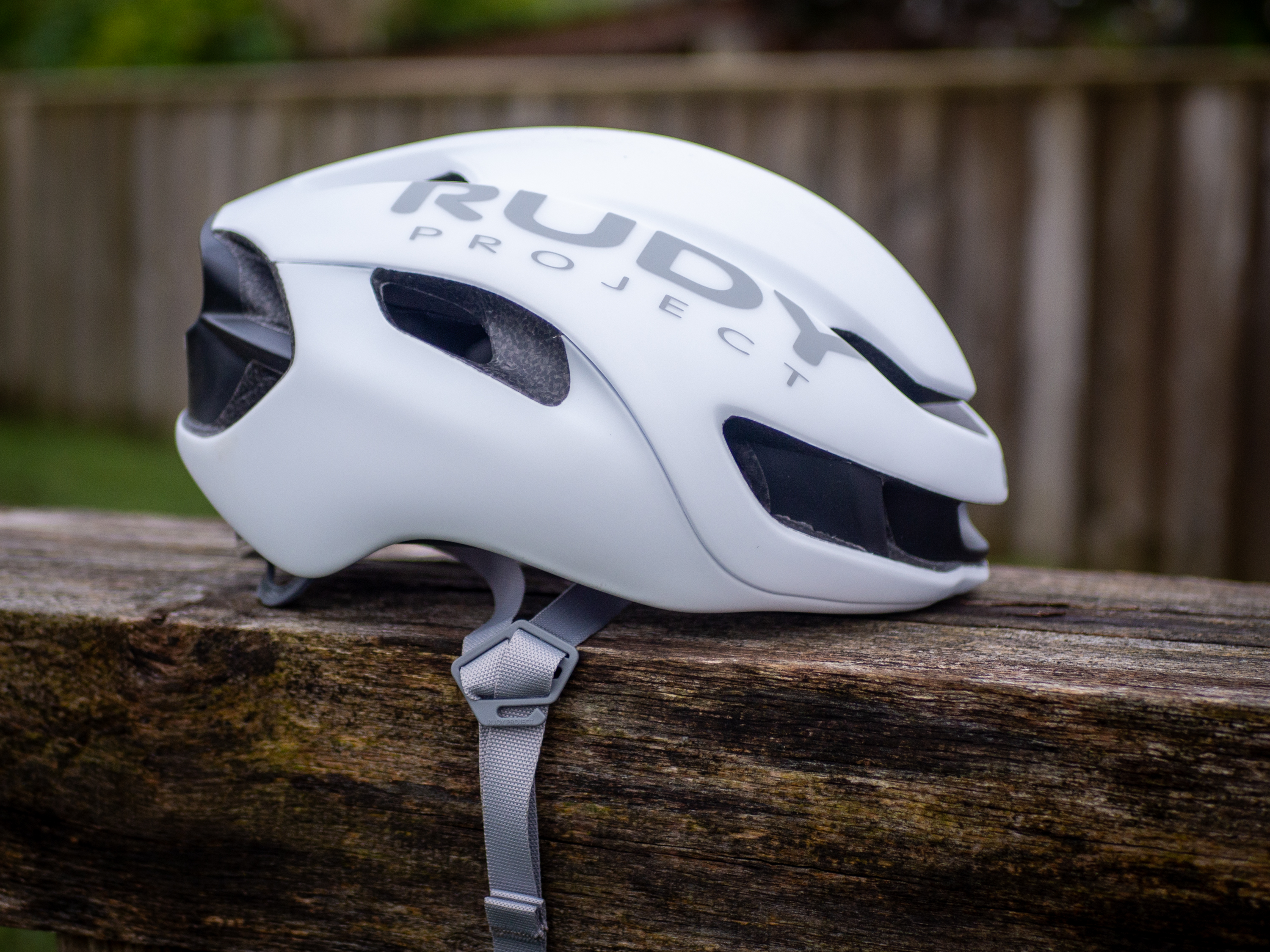Cyclingnews Verdict
The Rudy Project Nytron didn't perform well in our wind tunnel test, but that's not indicative of its aero performance in all positions or on different people. Where it does perform well is ventilation and comfort, plus some standout colour options are available too. The style, however, is potentially divisive while the size range is slightly limited.
Pros
- +
Ventilation levels are impressive at a range of speeds
- +
The retention system is effective and comfortable
- +
Passes the WG11 rotational impact test
- +
Standout colour options available
Cons
- -
Performs badly in our aero testing
- -
Limited sizes available
You can trust Cyclingnews
Price: £189.99 / €229.90
Weight: 287 grams - (S-M)
Sizes: S-M / L-XL
MIPS: No
Colours: White / Red-Black / Black / Pink fluro-Black / Blue Metal Metallic
The Rudy Project Nytron was released in 2021 after being spotted on the heads of the Bahrain Victorious riders. It has since been used by the team and helped contribute to monument and grand tour stage wins.
At £189.99 / €229.90, it’s at the more affordable end of the aero road helmets scale, which tend to be above £200 / €250 nowadays, but it is still more in competition with the market's best road bike helmets than those in our budget bike helmets guide.
Developed in conjunction with Swiss aero experts Swiss Side, the co-developers of the new Continental aero tyre, the brand states it was engineered and designed using wind tunnel analysis and testing. We put it to the test in our own wind tunnel helmets group test against all the aero helmets we could get our hands on to see how this wind tunnel R&D helped it perform.
There is of course more to an aero helmet than just aero performance, with comfort and ventilation other key considerations. With specifically designed large frontal vents, plus internal channels and large exhausts to boost airflow, the Nytron aims to perform when it comes to ventilation as well.
Safety it doesn’t feature any specific anti-rotational impact protection technologies such as MIPS, but it passes both the industry's ISO standard and separate independent testing protocol designed by WG11.
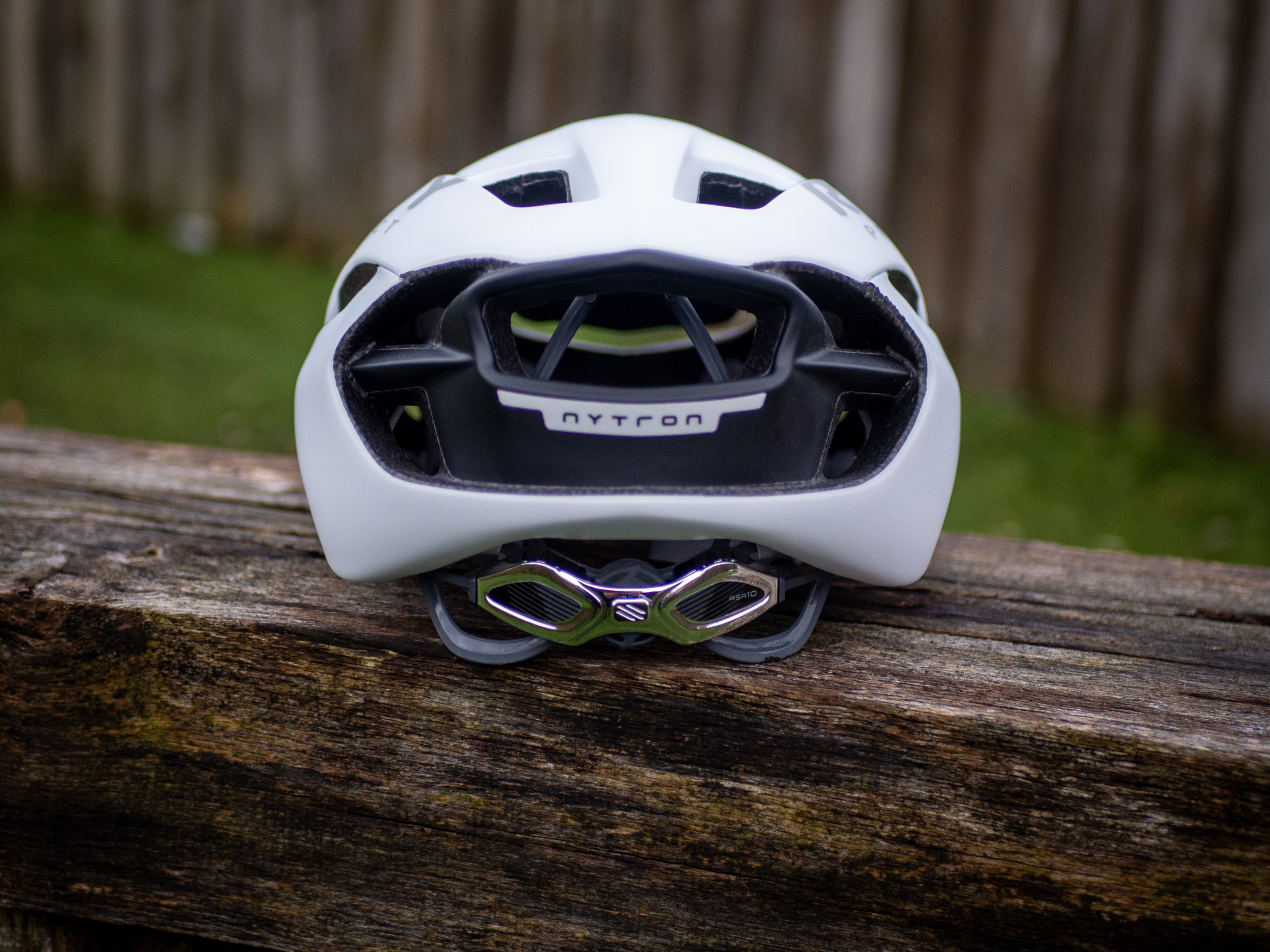
Design and specifications
With a primary goal of aerodynamic performance, Rudy enlisted the help of Swiss Side, a well-known brand in cycling and motorsport when it comes to assisting with aerodynamic development and performance. To do this, the brand looked to focus on airflow direction and management. The two main ways of controlling airflow are to control how it moves around the helmet, and how it moves through the helmet.
A bullet-shaped TT helmet will guide the air around like an aerofoil - think the big Visma Lease a Bike Giro TT helmet with no vents designed to control airflow around the helmet. However, this compromises ventilation and Rudy Project wanted to maintain that aspect of performance. This led the brand to focus on internal channelling and airflow, utilising the Venturi Effect.
The latest race content, interviews, features, reviews and expert buying guides, direct to your inbox!
To briefly explain the Venturi Effect: A large volume of air is channelled into a smaller passage, which speeds the flow of the air and creates a low-pressure area. This low pressure takes high-pressure air from around the helmet and directs it rearwards and reduces the chance of turbulence. This is what led to Rudy Project having the large frontal brow venting which is split into channels internally, plus a front vent, two side vents, and a large array of exhausts at the rear.
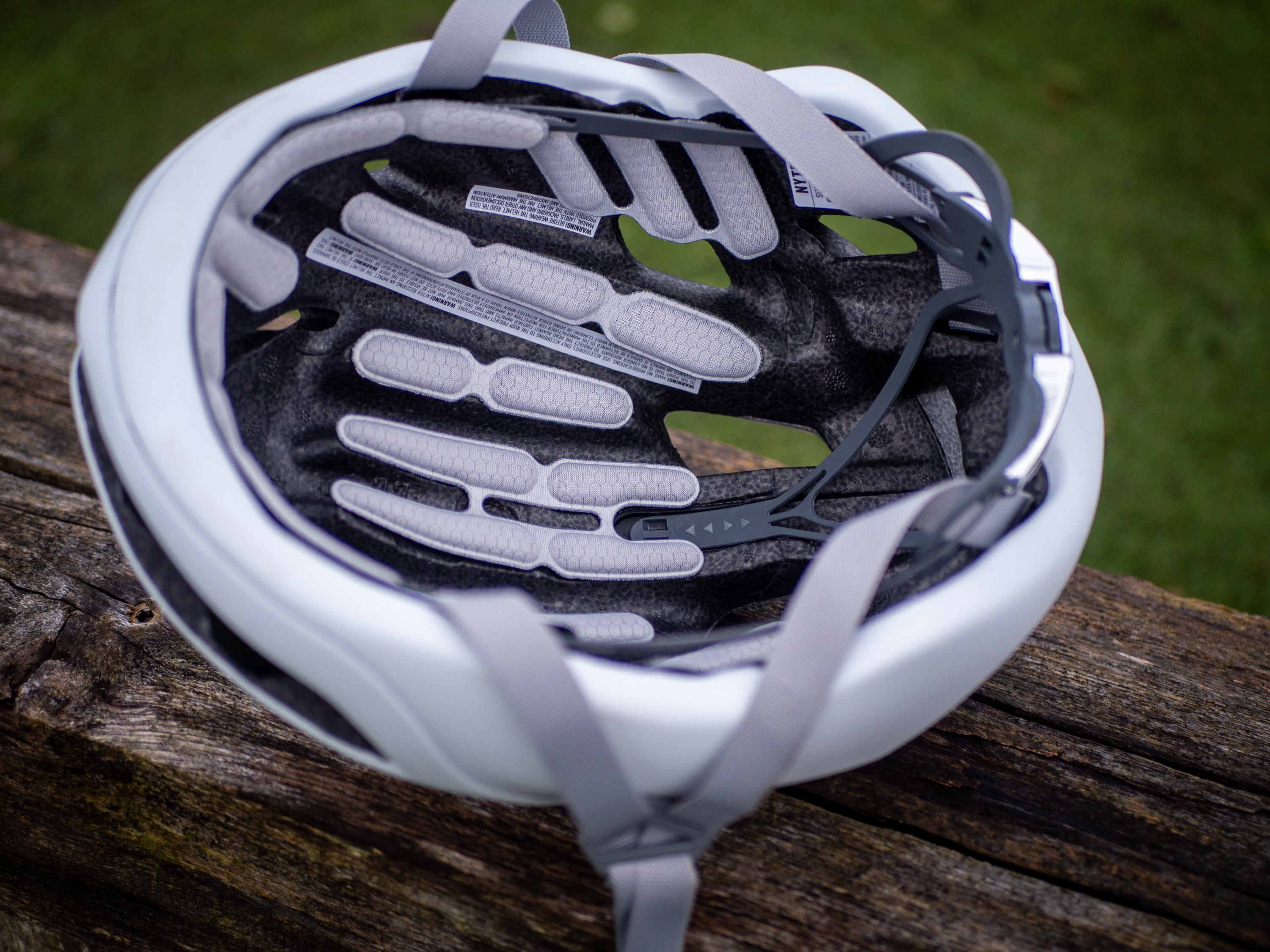
Internally, around the airflow channels, a large amount of padding is in place to boost rider comfort. In total eight different pads are used from the forehead to the temples and across the top. This is combined with a fairly adjustable retention system to keep the helmet in place. The rear cradle allows for vertical adjustment with an easy-to-use slider, while the cradle extends along the temple to the edge of the brow with an easy-to-use adjustment dial. The webbing straps have splitters for adjustment around the ear, while the strap uses a rubber slider to stop any flapping of excess material. A fairly standard three-pronged buckle is used to clip this all together.
As for protection, the Nytron doesn’t feature any specific safety features, such as MIPS, beyond the polycarbonate shell which is bonded to the foam inner. What the Nytron does feature is a pass on the Working Group 11 (WG11) rotational impact protection test. Size wise, just a Small/Medium and Large option are available, with no claimed weight, however our medium came in at 287g. Five colour options are available from fairly plain white and black, to standout fluro pink.
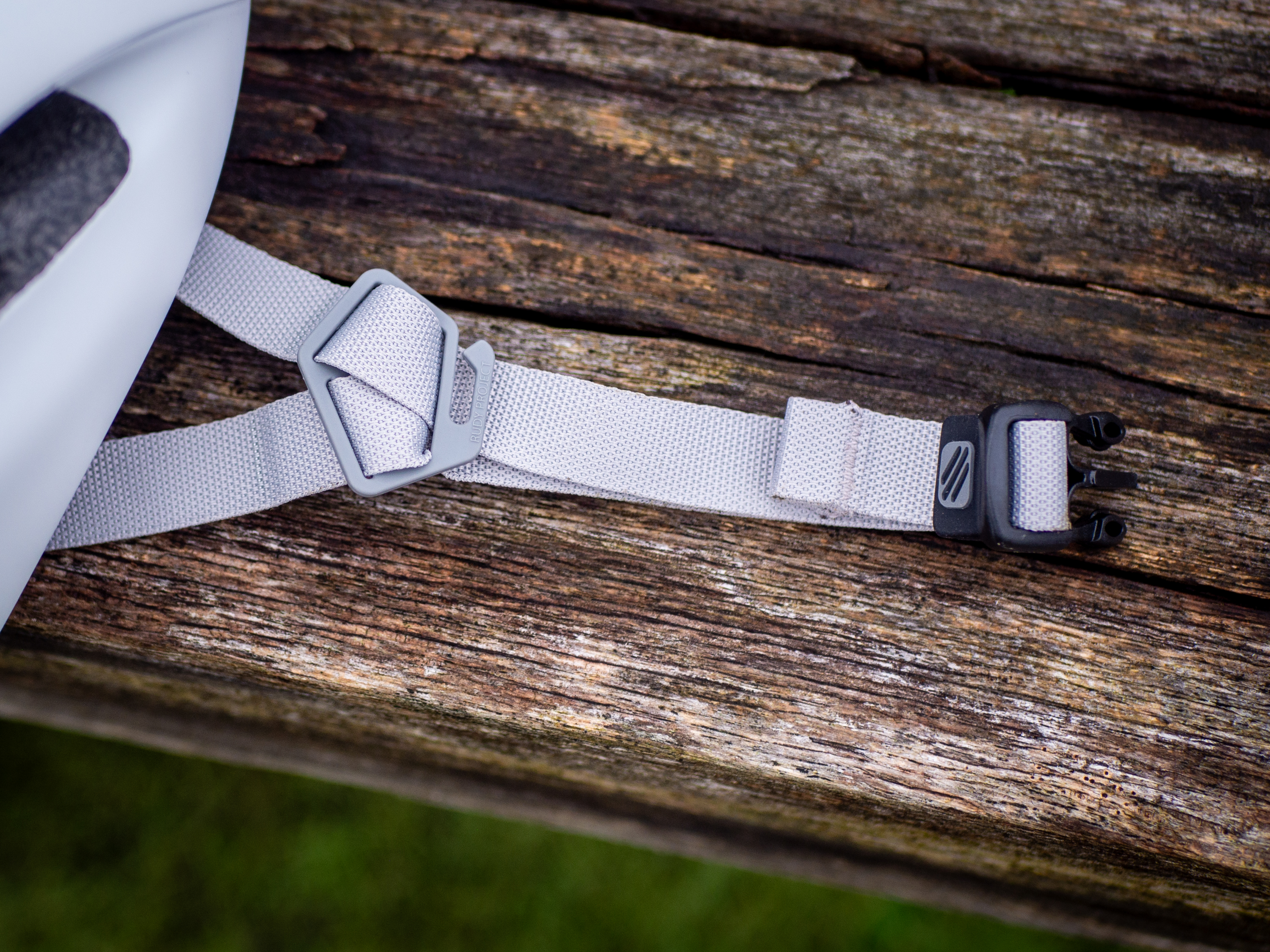
Performance
The Rudy Project Nytron is a helmet of two halves. In the most measurable of performance metrics, our wind tunnel testing, the Nytron simply did not perform very well compared to other aero road helmets. It is of course worth noting that aerodynamics are complex, and a different head position or different rider could have altered the results.
At the end of the day the Nytron, finishing 21st out of 25 tests, was 7.24w slower than the fastest helmet at 40km/h, but still 5.51w faster than the slowest. This shows that aero helmets are fairly close to each other and it doesn’t take much to swing things in favour of one to another.
But, basing purely from this test and our data, the Nytron is not a particularly fast aero road helmet, beaten in fact by some dedicated cooling-focussed models. Given the helmet was designed along with Swiss Side, this is slightly surprising to see given its long standing credentials as aero experts. However there was another key focus to this helmet.
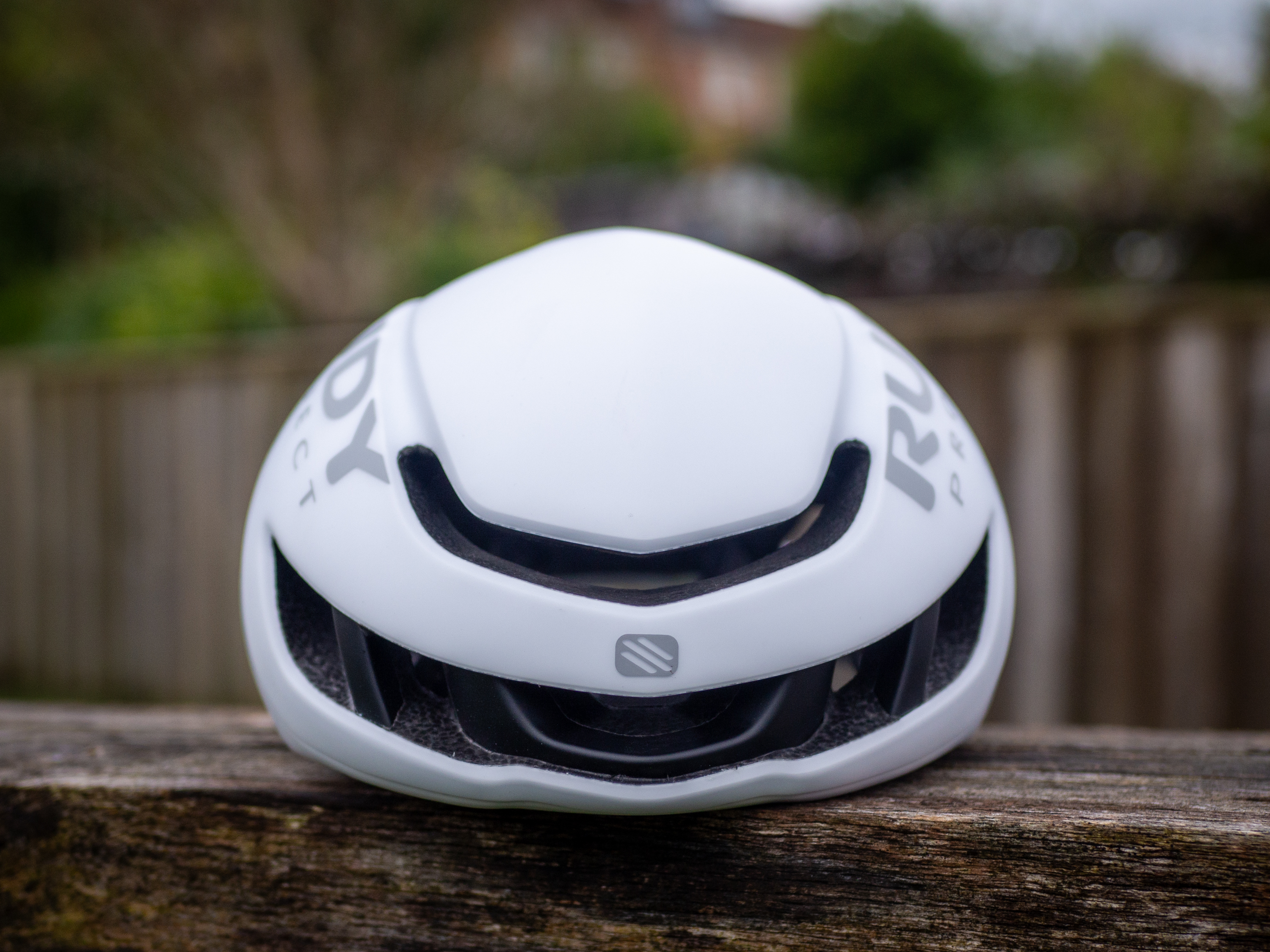
Ventilation is an area where the Nytron performs strongly. The brow of the helmet features a large array of five vents plus another vent just above that. These then channel airflow through the helmet and out the rear exhausts, with a little input from some side vents. The channels are not hugely deep, but there are so many of them and they’re narrow, which seems to prevent hair from filling them up too much and impacting airflow. It’s interesting to note that these vents were designed to offer ventilation without hindering aerodynamic performance.
Interestingly though, Rudy offers another variant of the Nytron, the Nytron Pro. On this model, the front vents have been filled to leave two small slits on the front and a smaller exhaust in the pursuit of aero performance over ventilation. This hints that the vents do hinder overall aero performance, and the Bahrain Victorious team have been seen in this helmet. However, that has been rare, which suggests that ventilation is an important performance consideration for world tour athletes, so much so that they are willing to forgo the aero benefits.
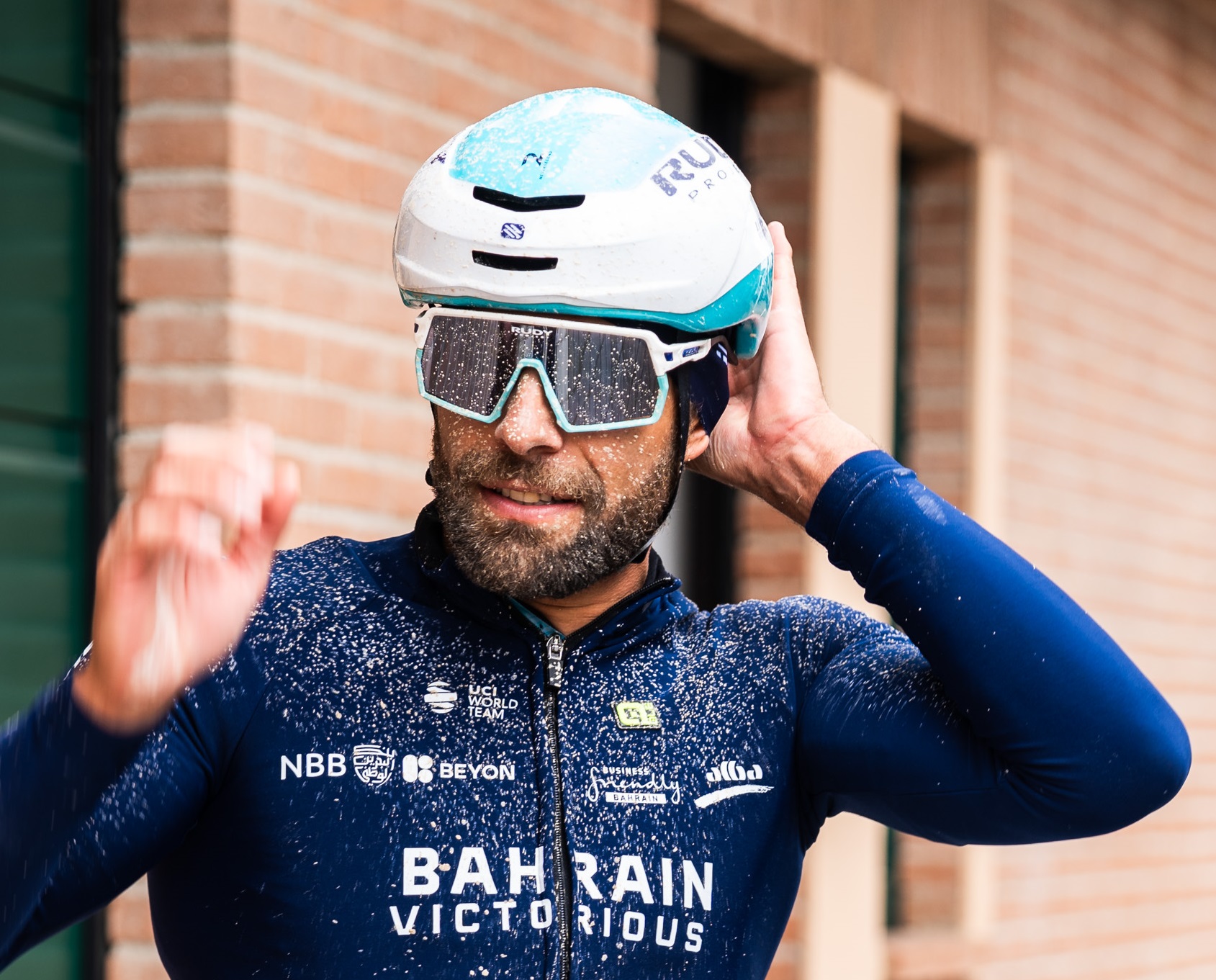
Conjecture aside, while riding with the Nytron, I was genuinely impressed with the ventilation, as it was significantly better than most aero road helmets I’ve used. Current autumn temperatures have been quite mild; good for testing ventilation in mid-teens while kitted up warm and doing efforts, so plenty of excess heat is being produced. The brow vent is the main star of the show, funnelling lots of air into the helmet, but the surprise benefit were the top vents. When dipping my head down, they gave a pleasant rush of cool air onto the top of my head, which was appreciated during some harder efforts. The wide exhaust also appears to extract warm air nicely from the head, even with elements of the cradle crossing over it internally.
Fit is another area where the Nytron performs well. The retention of the helmet covers a large proportion of the head, stretching from between the temple and forehead all the way back and around to give around 300 degree coverage. Retention itself is dealt with a rear dial in a metallic surround which is plastic, but adds a little bit of bling. This dial features small studs across it, making it easy to grip and adjust with a pleasant click to tighten. However to release it’s a bit less tactile and feels to have a bit of give at wherever you release it. This rear cradle is adjustable vertically too, so you can tailor where the cradle cups your head. It has six positions in total, and is very easy to adjust by just pulling or pushing the entire cradle, but won’t adjust unintentionally like on the Kask Utopia Y.
As for the straps, these are fairly standard webbing of 15mm wide, with a slightly clunky looking splitter for adjustments around the ear. The buckle is just a simple three pronged click and release, but it’s a design that I’ve never had issue with, whereas adjustments on this design have proven variable in their performance, again the Kask Utopia Y. What is nice is that the chin strap uses a rubber surround the keep any excess strap material from flapping around, giving a cleaner look.
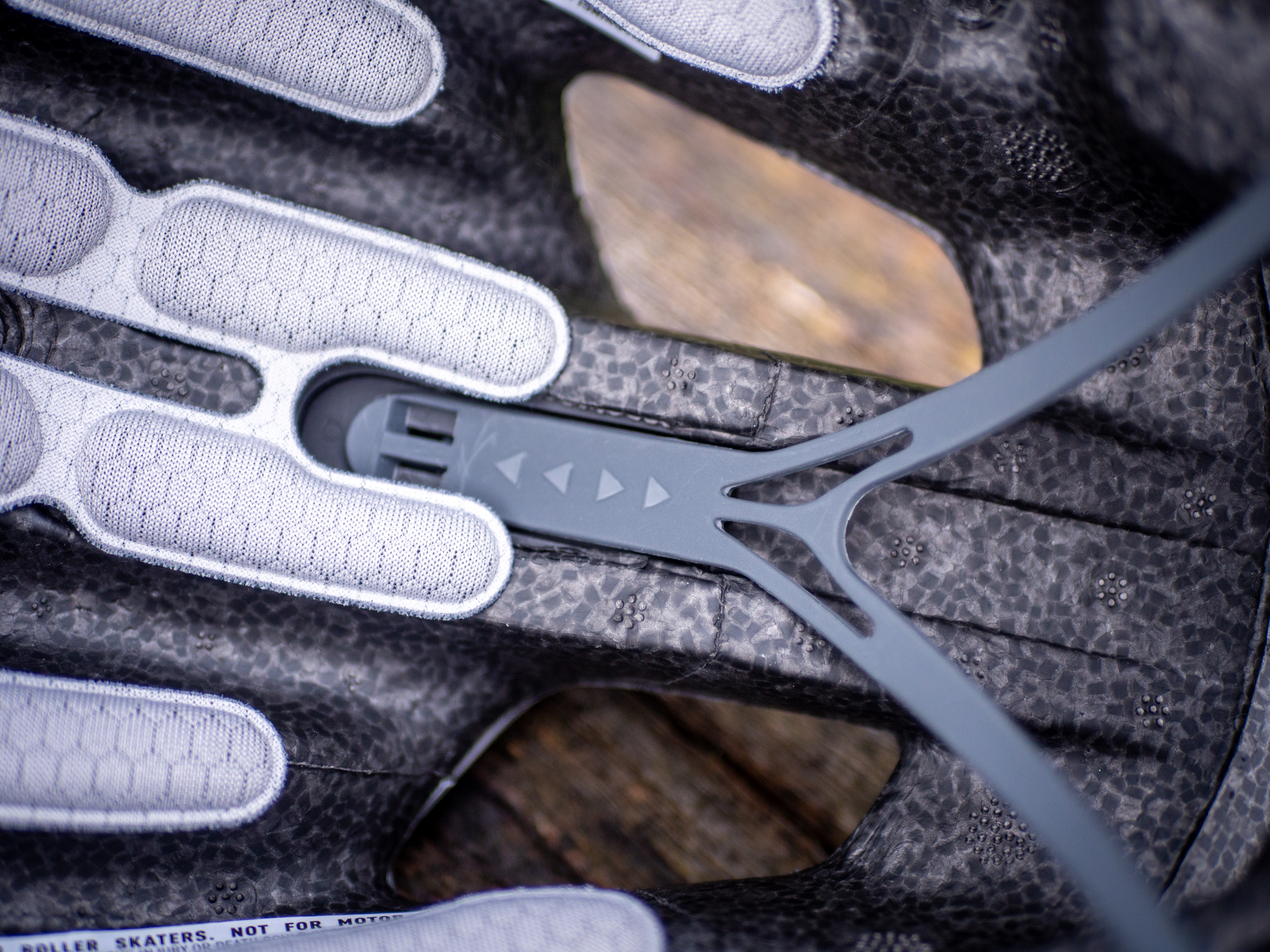
Safety is of course another key consideration when it comes to helmets. The Nytron differs from a lot of modern helmets which come with specific anti-rotational impact protection systems like MIPS, Kineticore or KOROYD. However it does pass rotational impact testing from Working Group 11 (WG11) which is the test protocol that Kask also use to certify its helmets. It's also worth noting that WG11 test pass helmets have also scored five star ratings on the Virginia Tech Helmet (VTH) ratings, as have other Rudy Project helmets that have also been WG11 approved.
Value
When it comes down purely to price, the Nytron is a strong competitor being one of the few helmets to drop below the £200 mark in our aero helmet group test. This puts it in the same sort of bracket as the Julbo Sprint and Carnac EVO. Both of these helmets performed better in the wind tunnel, the Carnac only ever so slightly. However there’s a lot more to a helmet than just aero performance. The Julbo did not perform anywhere near as well as the Nytron in either ventilation or comfort, and didn’t feature any independent crash safety ratings.
Given the Nytron is such a strong performer when it comes to comfort and ventilation, it is significantly better value than similarly priced competitors. The ventilation is also better than more expensive options, so it becomes a balance of cost, ventilation, and aero performance for many people looking at aero road helmets.
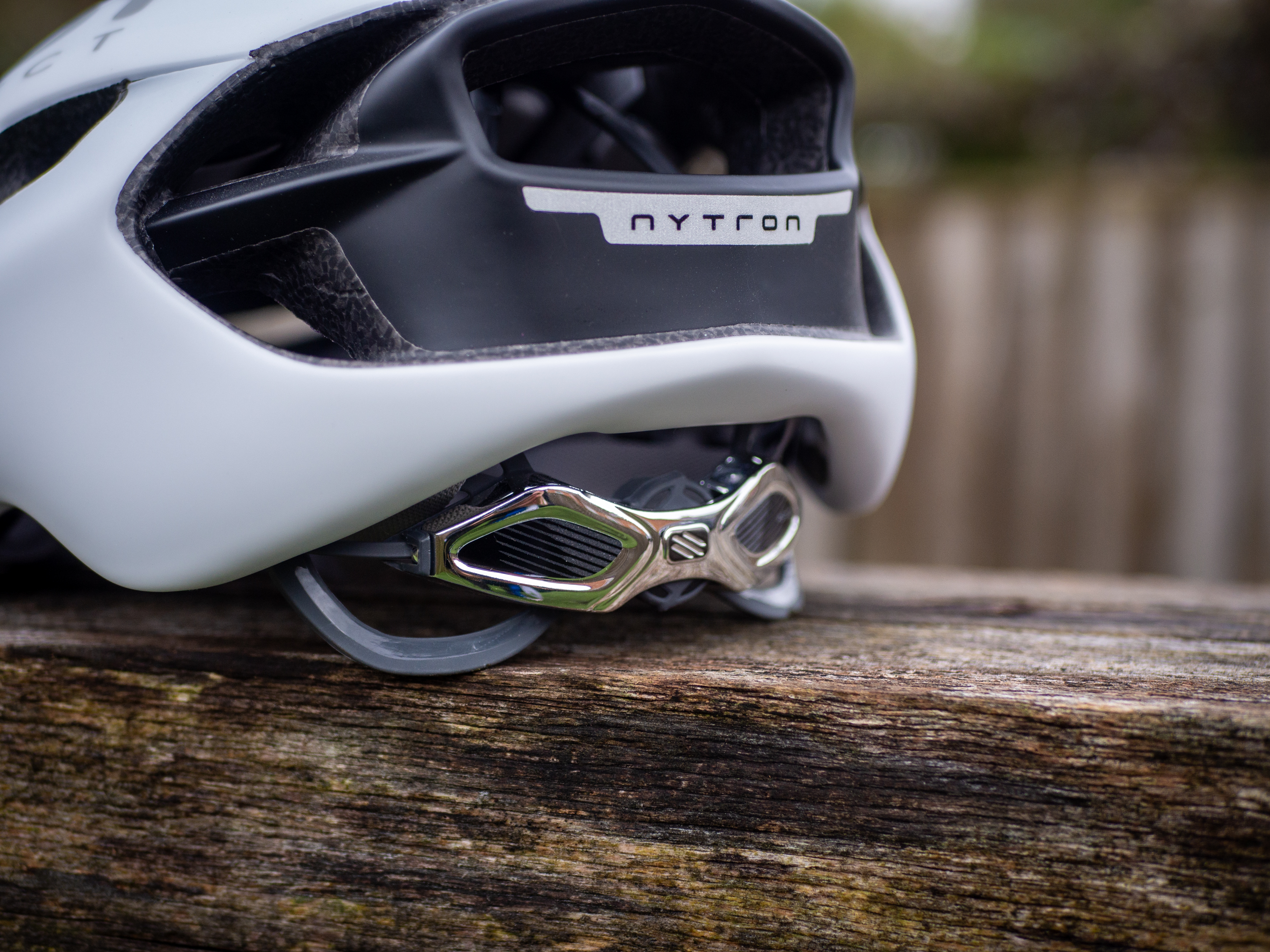
That aero performance is also of course based on our test, with one rider, in one position. It still gives an idea of performance of aero road helmets, especially in the position that most of us will maintain on rides, but it is not gospel. Fit is of course also subjective, and only two sizes being available does limit that slightly. However for those wanting a helmet that is well ventilated, is comfortable to wear, and features an aero advantage over most more vented helmets while being cheaper, the Nytron may well be worth considering.
Verdict
The Rudy Project Nytron is an interesting aero road helmet. In our wind tunnel testing, it came out as one of the slowest aero helmets on test, beaten even by some ventilation focussed competitors. However, aerodynamics are complex, and this doesn’t mean it will perform as badly on different riders in different positions.
Where is does perform well on a more objective scale, is ventilation and price point. The Nytron has better cooling than most aero road helmets I’ve tried, while price is significantly lower than many other options. Fit is another area that this helmet performs well in, although again more subjective and smaller head sizes may be limited by the Small/Medium or Large offerings only.
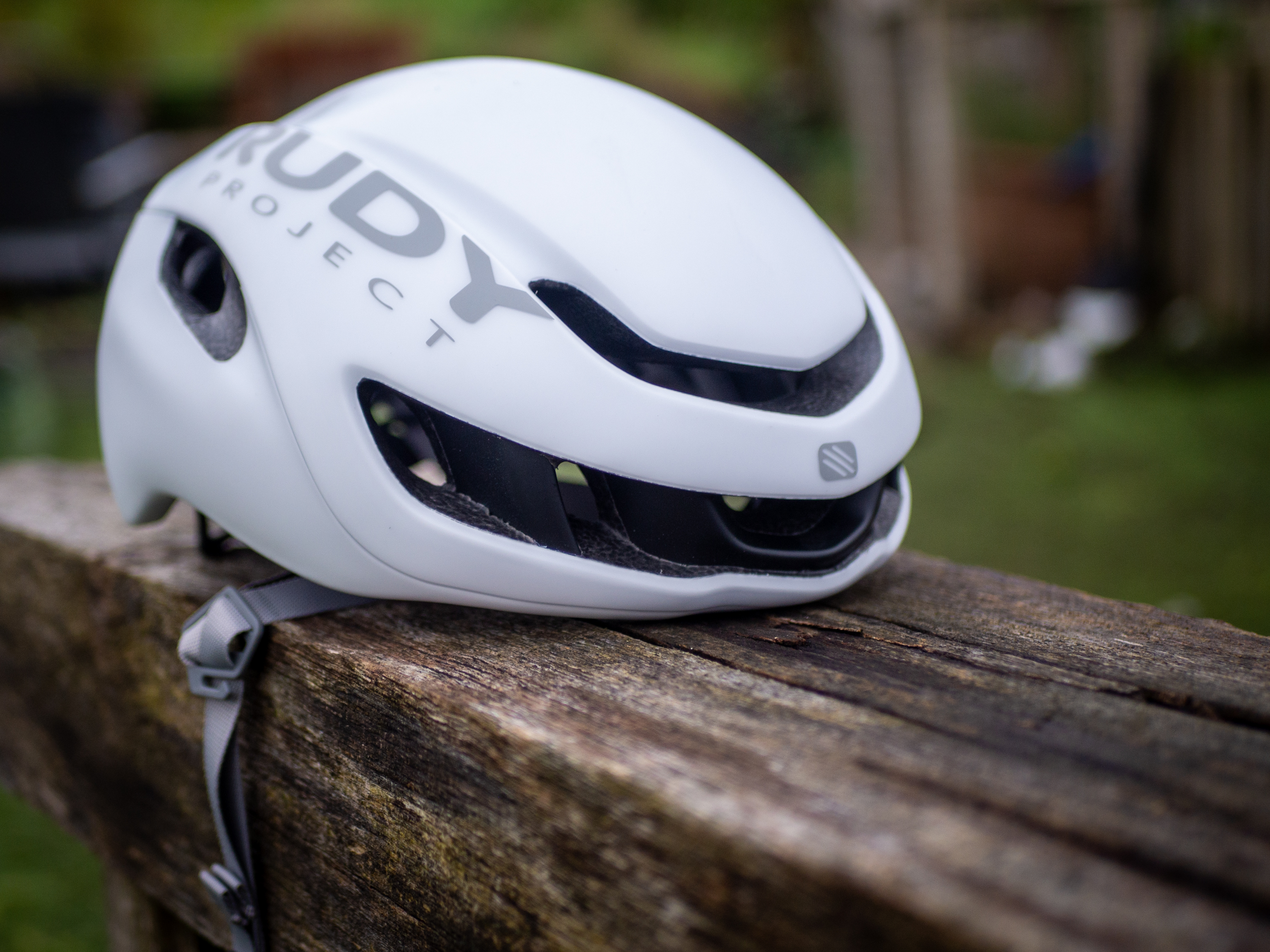
| Design and Aethetics | High quality finish that looks sleek, the front vents may divide opinion | 8/10 |
| Comfort | Very comfortable with or without a cap, easy to adjust as well | 9/10 |
| Ventilation | Not as cool as a full vented helmet, but significantly better than other aero offerings | 8/10 |
| Safety | Passes WG11 testing protocol for rotational impact protection | 8/10 |
| Aero Performnce | One of the worst performing aero helmets in our aero testing | 2/10 |
| Value | Good quality, comfortable, well vented and well priced. But lacking speed | 8/10 |
| Row 6 - Cell 0 | Row 6 - Cell 1 | 43/60 |

Freelance cycling journalist Andy Turner is a fully qualified sports scientist, cycling coach at ATP Performance, and aerodynamics consultant at Venturi Dynamics. He also spent 3 years racing as a UCI Continental professional and held a British Cycling Elite Race Licence for 7 years. He now enjoys writing fitness and tech related articles, and putting cycling products through their paces for reviews. Predominantly road focussed, he is slowly venturing into the world of gravel too, as many ‘retired’ UCI riders do.
When it comes to cycling equipment, he looks for functionality, a little bit of bling, and ideally aero gains. Style and tradition are secondary, performance is key.
He has raced the Tour of Britain and Volta a Portugal, but nowadays spends his time on the other side of races in the convoy as a DS, coaching riders to race wins themselves, and limiting his riding to Strava hunting, big adventures, and café rides.
